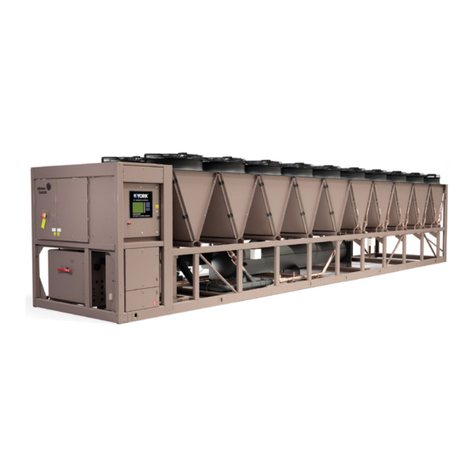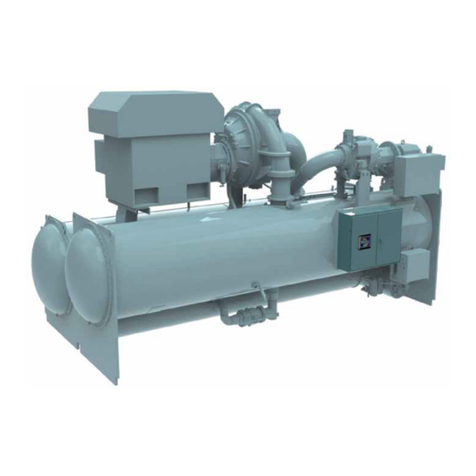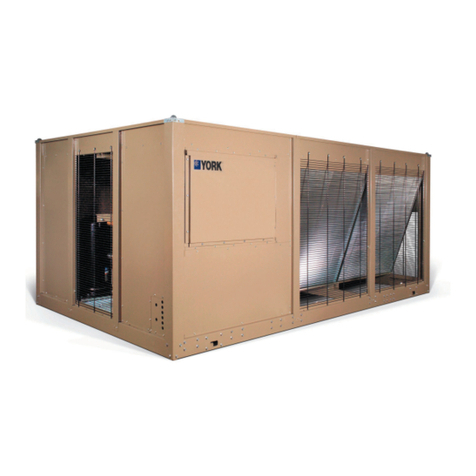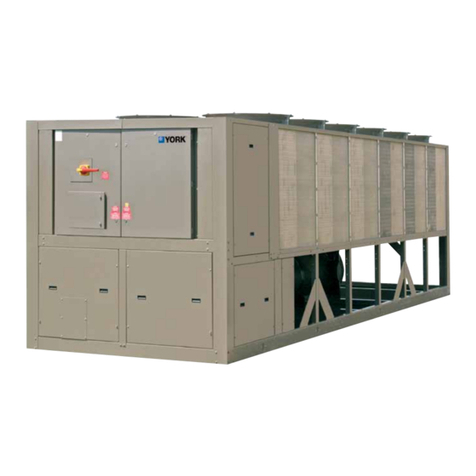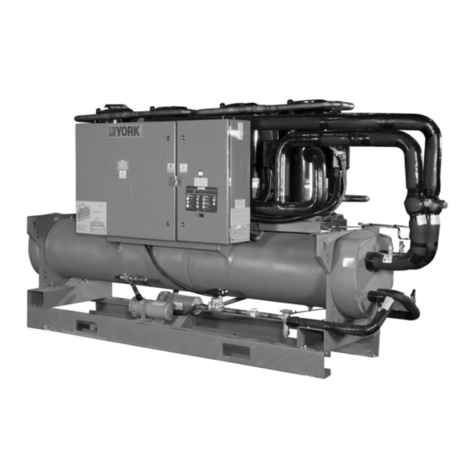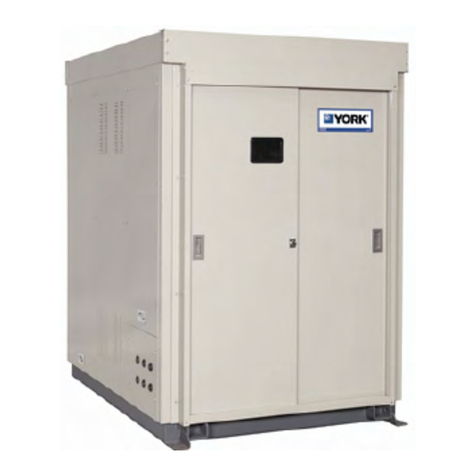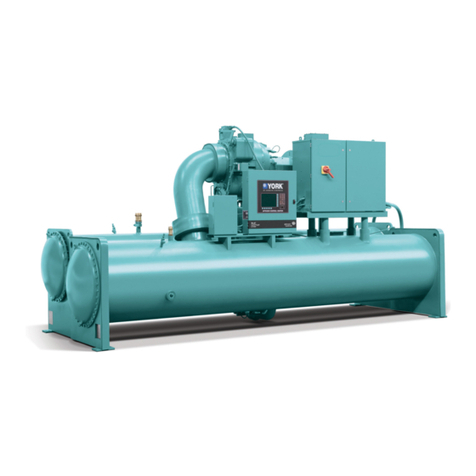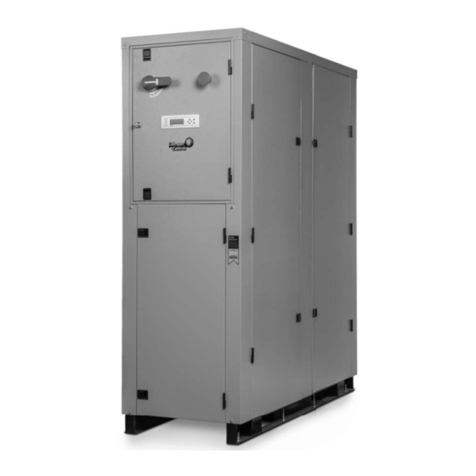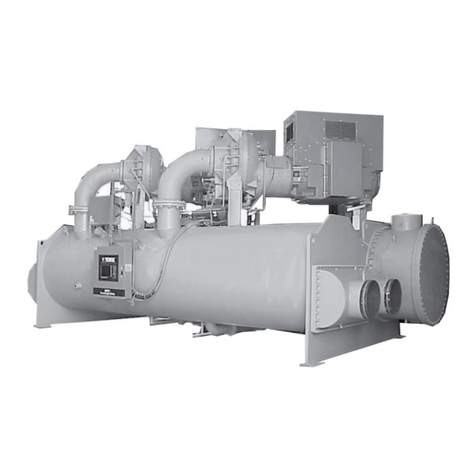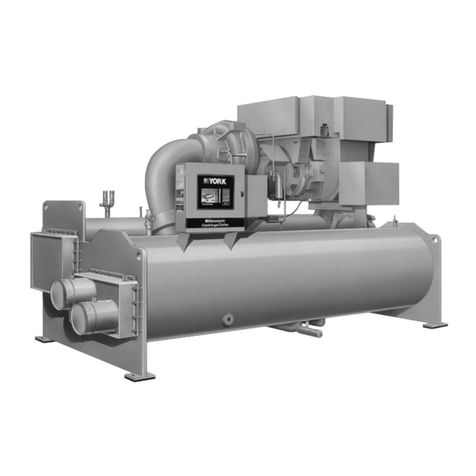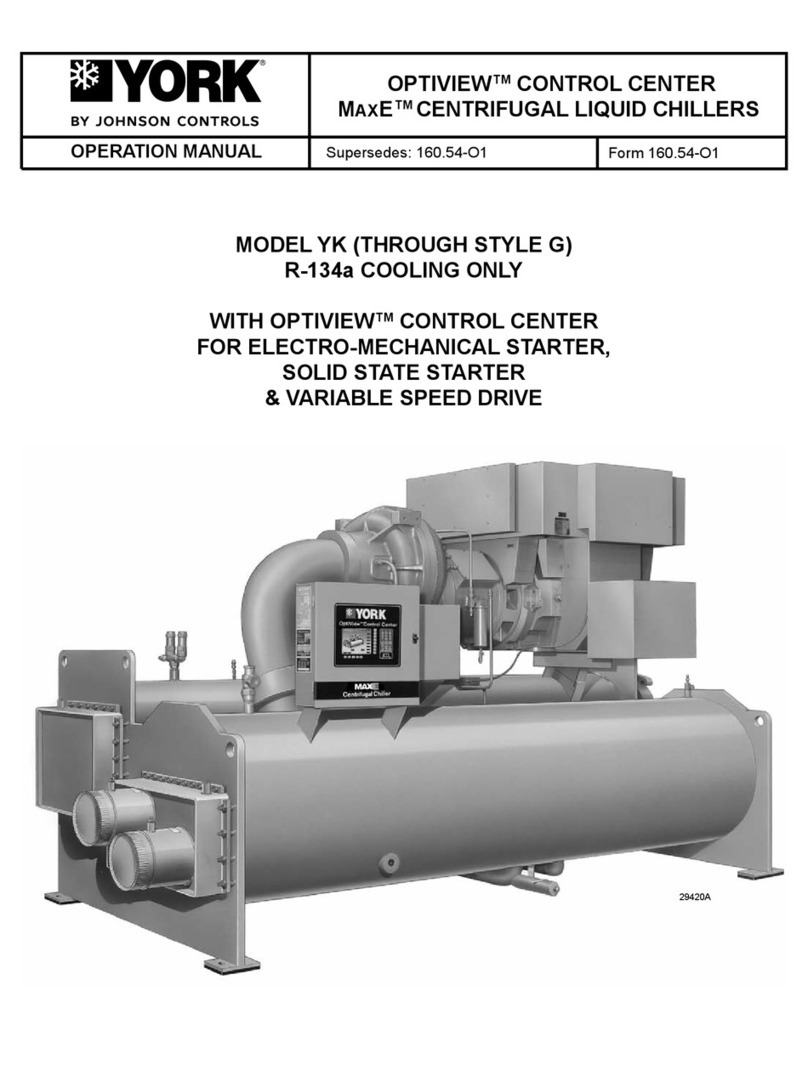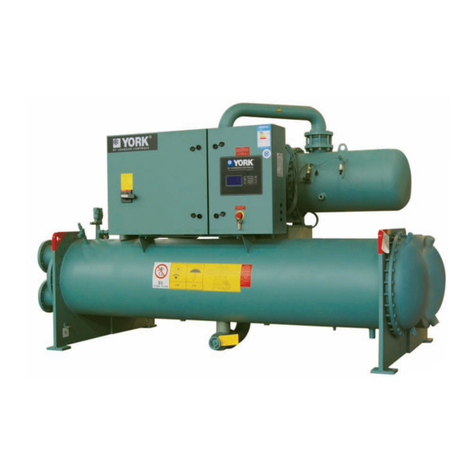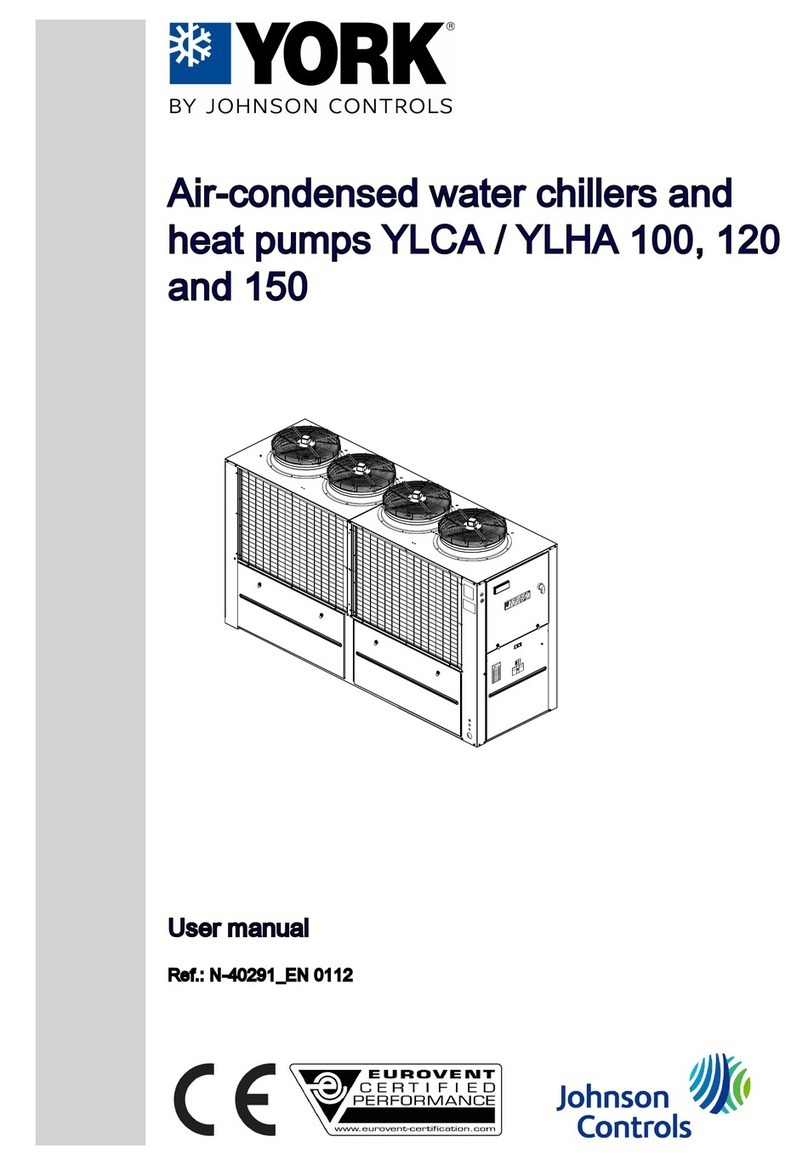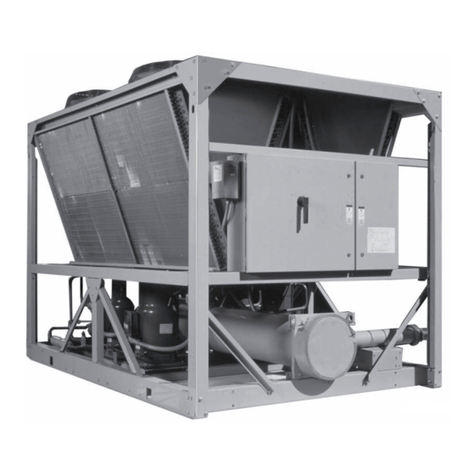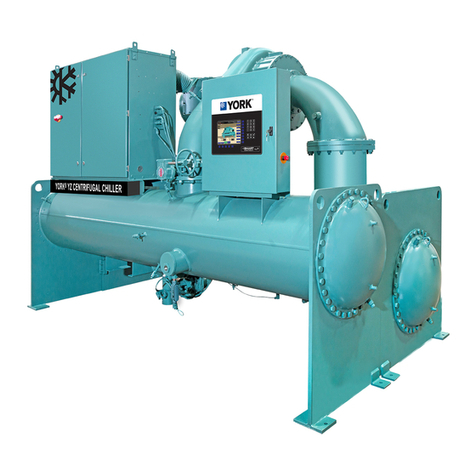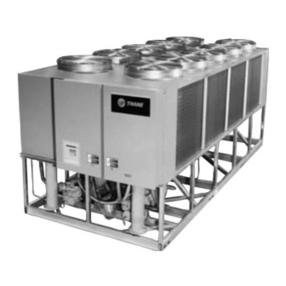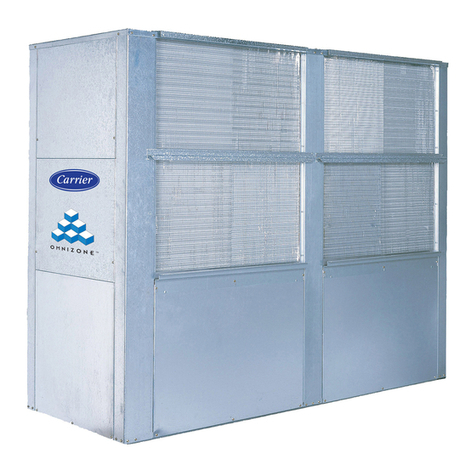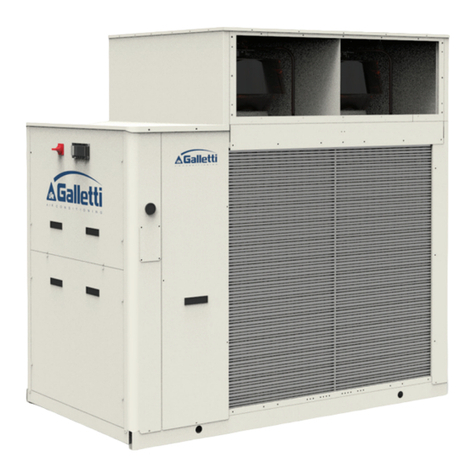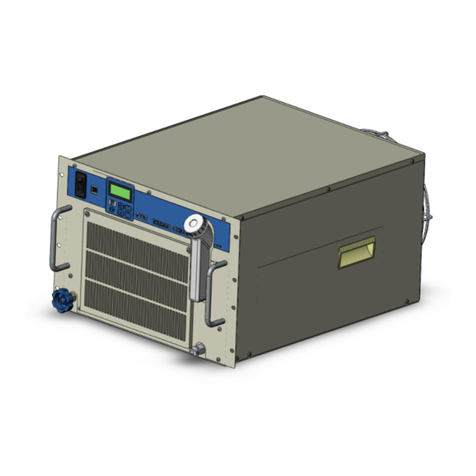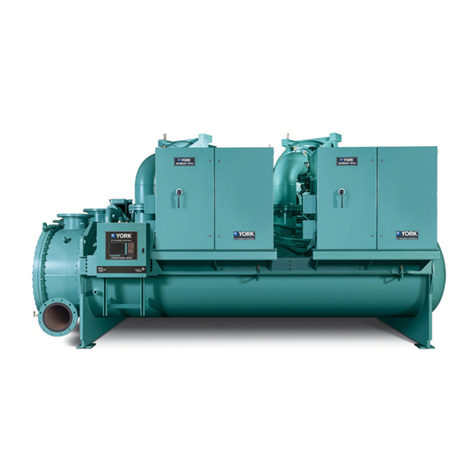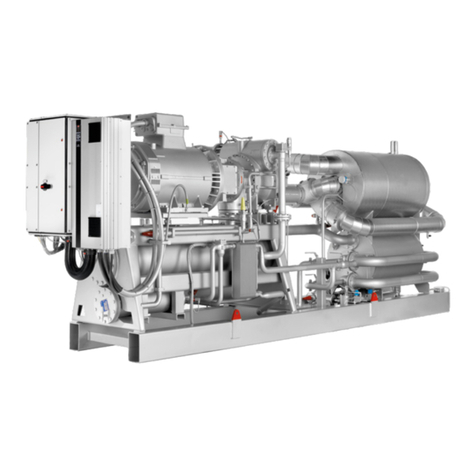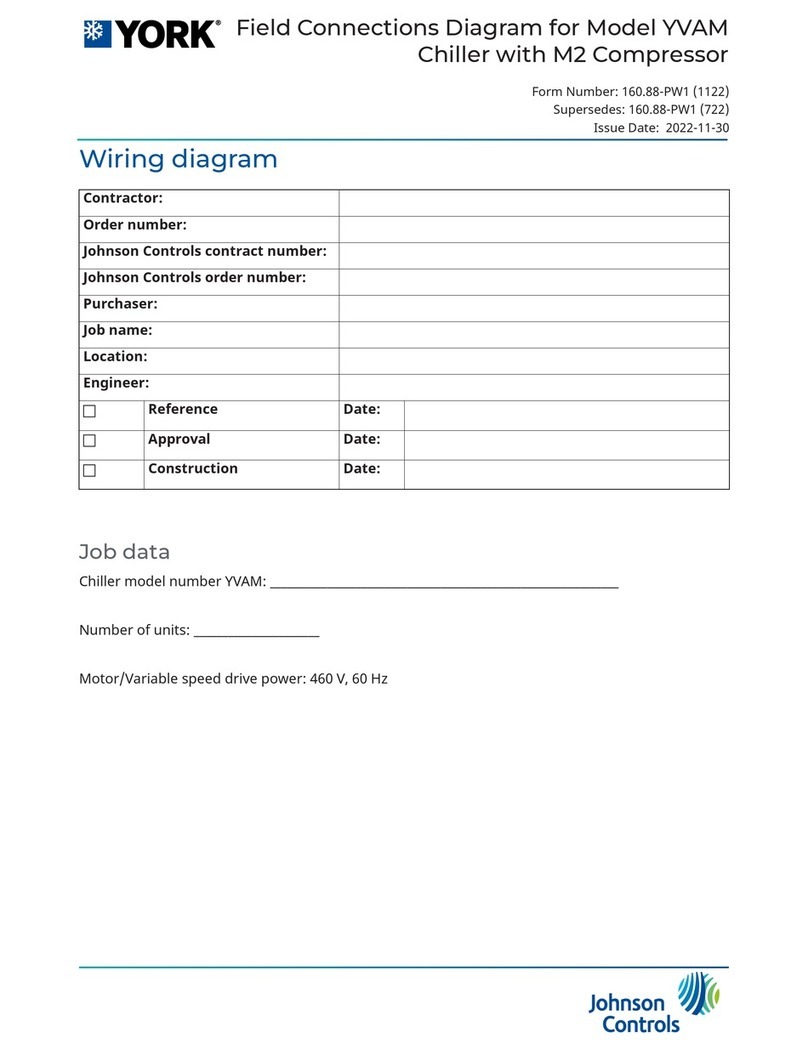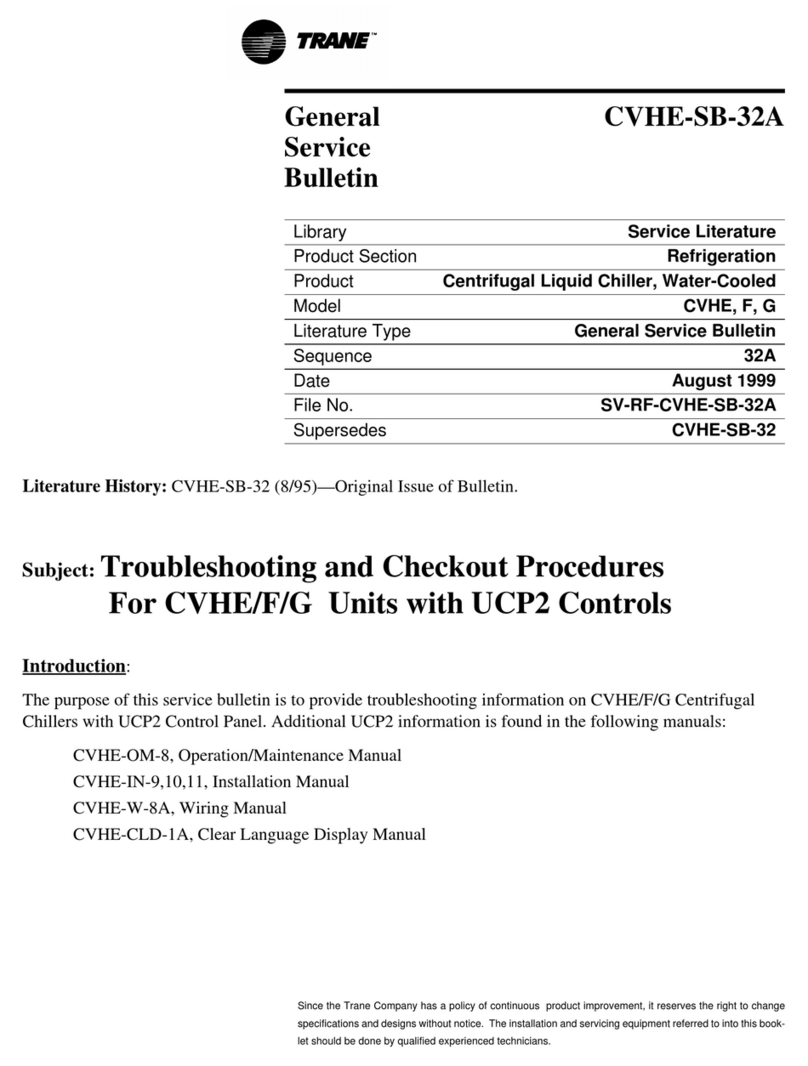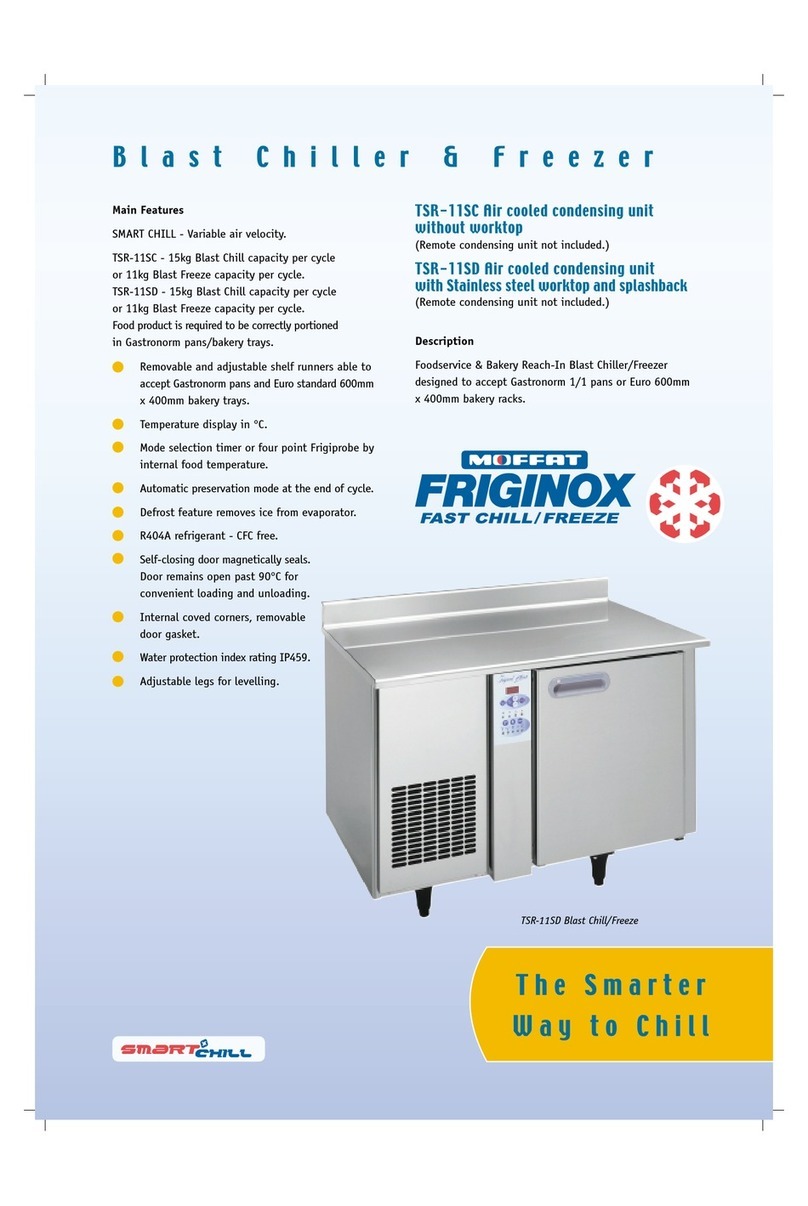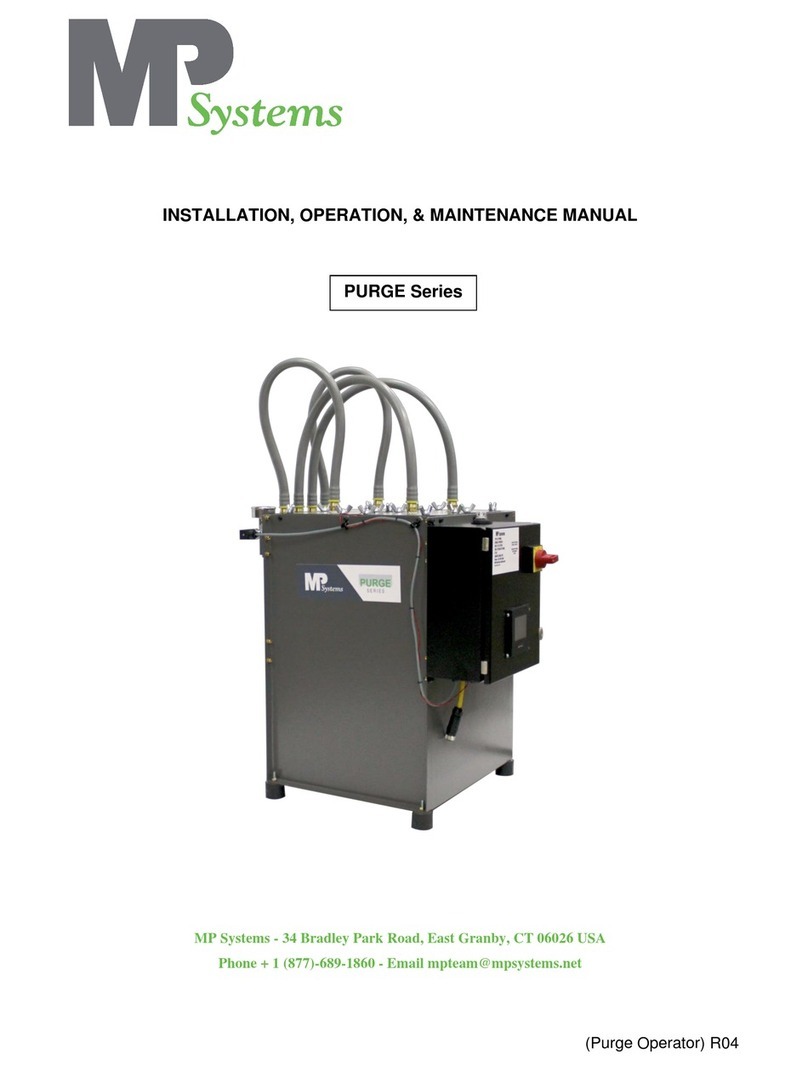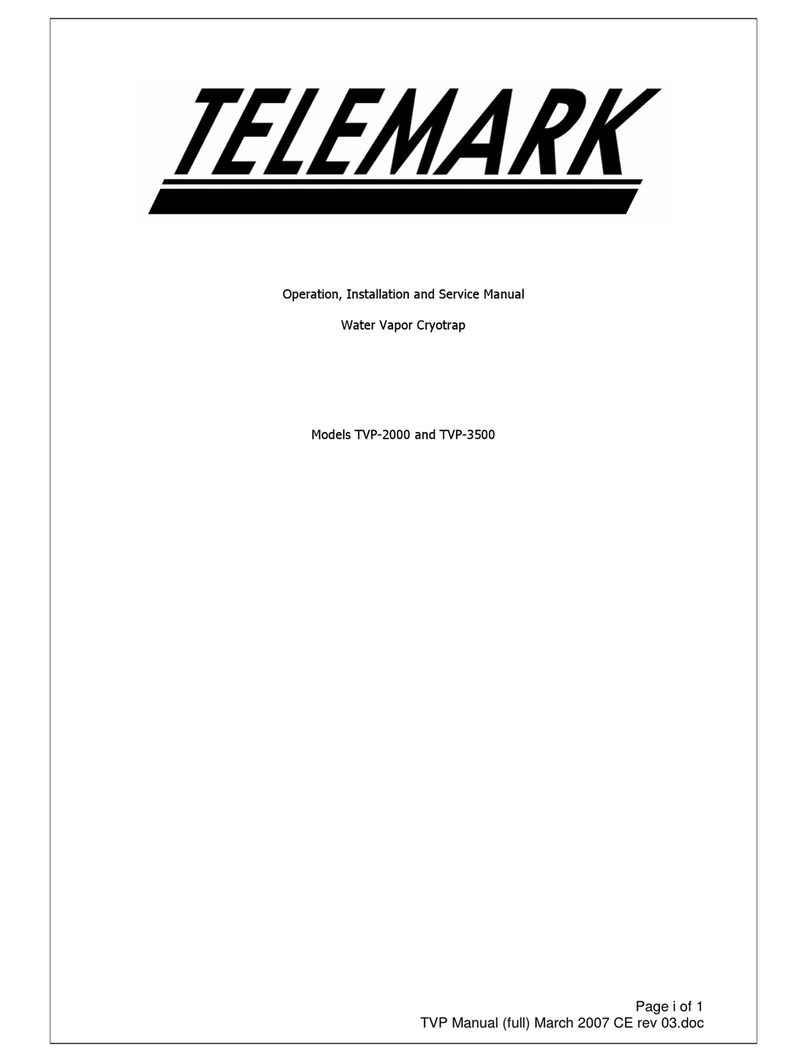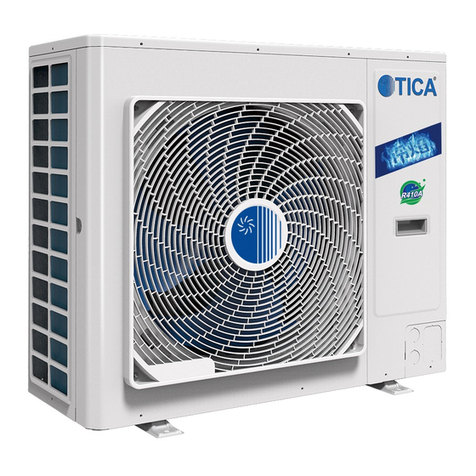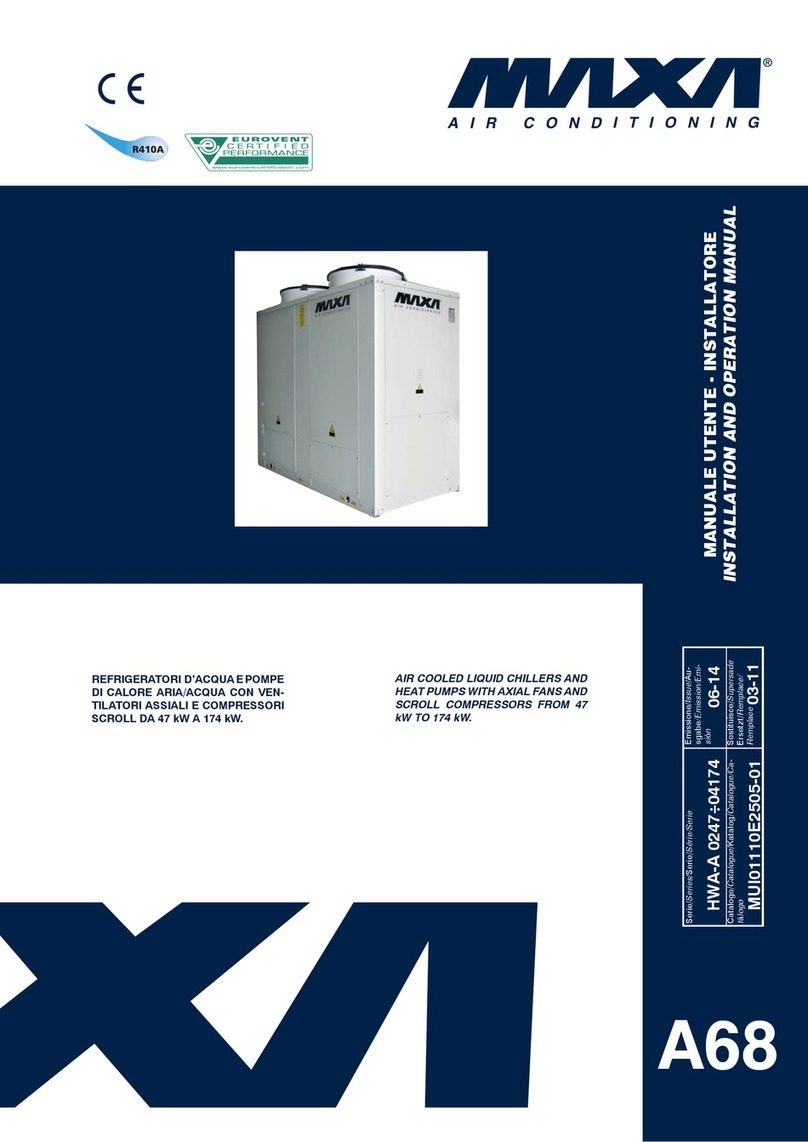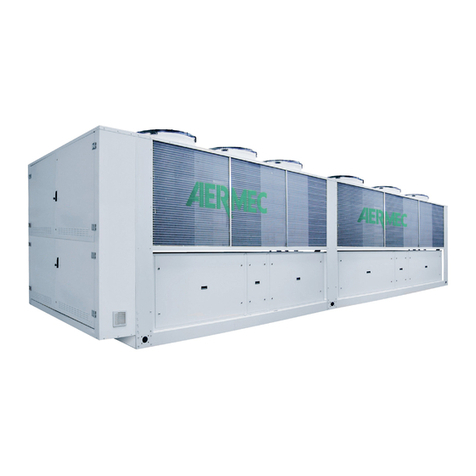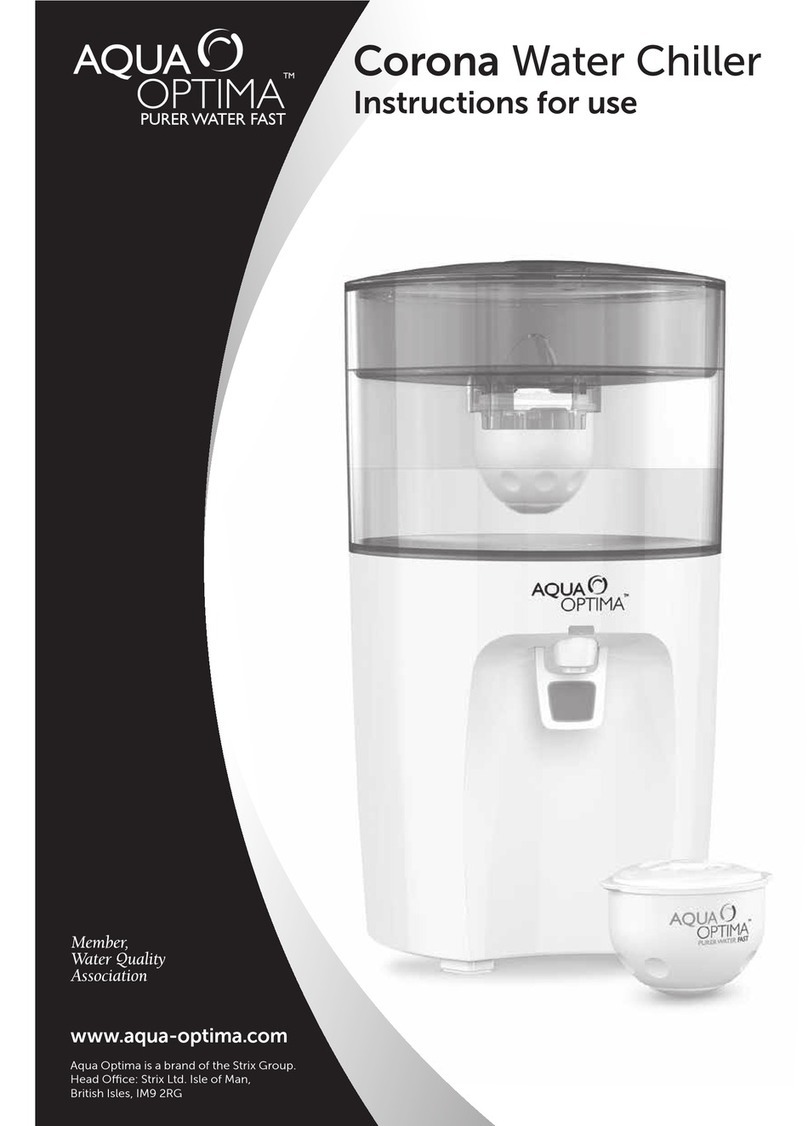
JOHNSON CONTROLS 9
FORM 160.72-O1 (810)
SECTION 2 - PRINCIPLES OF OPERATION
The OM Titan Chiller operates under the following
principles:
The fluid (to be cooled) flows through the tube side
(inside the tubes) of the evaporator. Liquid refriger-
ant is located in the shell side of the evaporator, and
is maintained at its saturation temperature by the com-
pressor. The liquid refrigerant is at a lower temperature
than the circulated fluid. Sensible heat flows from the
fluid, through the evaporator tube walls to the refriger-
ant, thereby cooling the fluid. The heat transferred to
the refrigerant causes it to boil.
In order to sustain this process, the refrigerant is held at
the correct saturation temperature by drawing refriger-
ant vapor from the shell side of the evaporator. This is
achieved through the use of the ‘M’ series multistage
centrifugal compressor. The vapor drawn from the
evaporator is compressed by the compressor to a suf-
ficiently high pressure so that the superheated tempera-
ture of the discharge vapor is higher than that of the
condenser water. The high pressure refrigerant is con-
tacted to the condenser water (on the tube side of the
condenser) and is condensed to a high pressure liquid.
This liquid is flashed in one or two stages, cooling each
time and returning back to the evaporator to complete
the cycle. Flashing is the process by which the high
pressure liquid is exposed to a lower pressure causing
the refrigerant to boil, cooling the condensed refrig-
erant liquid. The vapor created in this process (flash
gas) is drawn back into the compressor through the
compressor side load (inter-stage) port or ports and the
colder refrigerant liquid is used to provide cooling.
The M Series multistage compressor operates on the
centrifugal principle. The compressor consists of two
or more impellers which draw gas into the center (suc-
tion) and accelerates the vapor to high velocity (kinetic
energy) at the discharge of the impeller. As the vapor
exits the impeller, the velocity of the gas reduces as it
passes through the diffuser (located around the circum-
ference of the impeller), and the kinetic energy is trans-
formed into potential (pressure) energy. This process
is repeated for each impeller (compression stage). The
compressor shaft is rotated by means of either, an elec-
tric motor (via a speed increasing gearbox), a direct
drive steam turbine, a gas turbine (via a speed reduc-
ing gearbox) or a reciprocating gas engine (via a speed
increasing gearbox).
OM SUBCOOLING
Description and Operation
The OM Titan uses a two or more staged compressor
with flash type intercooler. The liquid is flashed off at
an intermediate pressure, to lower the enthalpy of the
liquid refrigerant as it enters the evaporator, thus pro-
viding a greater refrigeration effect in the evaporator.
The OM Titan utilizes liquid subcooling in addition to
the interstage cooling cycle for better efficiency. By
passing liquid refrigerant over tubes in a subcooler
section, the refrigerant temperature is lowered from
the saturation temperature, to a subcooled temperature
closer to the entering condenser water temperature.
By lowering the refrigerant temperature ahead of the
high stage expansion device, the amount of flash gas in
the intercooler is lowered, thus reducing the gas flow
through the second or possibly third stage impeller and
therefore lowering overall horsepower.
The OM Titan chiller utilizes a subcooler bundle inte-
gral to the main condenser located in the bottom section
of the condenser shell. As liquid refrigerant condenses
in the main condenser, it drains to the bottom of the
main condenser section. At the bottom, the refrigerant
is channeled to the subcooler inlet area, located at the
return water box end of the condenser (opposite from
the water inlet nozzle). Refrigerant liquid enters the
subcooler section from the sides and bottom (there is a
plate blocking the top). Dual subcoolers are utilized in
condensers with tube lengths 20 feet or longer.
The level of refrigerant in the subcooler is adjusted at
full load to provide a liquid level an inch or two above
the subcooler at the inlet area. This level needs to be
sufficient at full load to prevent refrigerant gas from
entering the subcooler. The refrigerant liquid flows
axially down the shell length over the subcooler tubes,
and exits out the bottom at the condenser water inlet
end.
A pneumatic ball valve is mounted in the piping leav-
ing the subcooler. This valve responds to the subcooler
inlet level transmitter signal to maintain the refriger-
ant level above the subcooler tubes. A ball valve was
selected for its ability to control over a wide range of
chiller loads and “head” or differential pressure con-
ditions. The valve is selected to fail open and opens
on chiller shutdown, primarily to drain liquid from the
2
